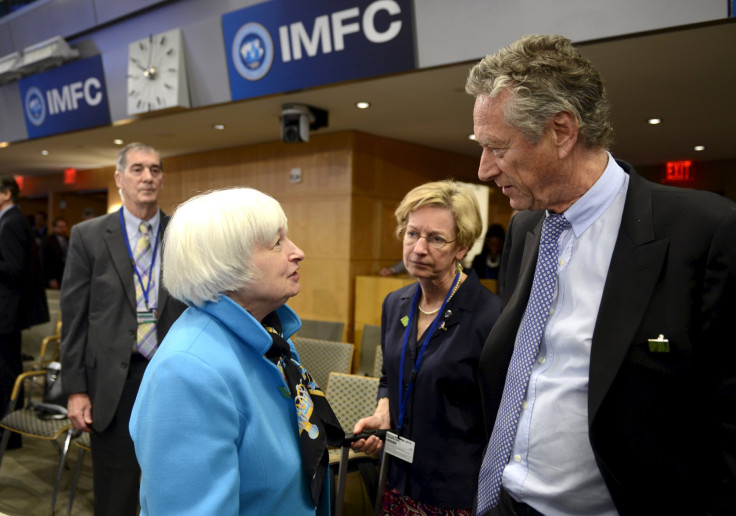Central Banks Will Be Busy This Week, But Their Ability To Boost Global Business Is In Doubt

(Reuters) -- Most big central banks have been easing policy since the beginning of the year and are set to do more, but it still isn’t clear whether that new activism, which has pushed stock markets to record highs, will help the global economy much. Several meet to set policy this week. They include the Bank of Japan, Sweden’s Riksbank and the U.S. Federal Reserve, which all have turned at one time or another to government bond purchases as stimulus after running out of interest rates to cut.
Yet recent easing -- and the halving of crude-oil prices, which was meant to be a windfall for consumers -- have not changed the global outlook much, according to Reuters polls of hundreds of economists published last week.
The Fed concluded purchases under its latest quantitative-easing (QE) program about six months ago. But it appears likely it will be forced to wait until later this year, instead of June as was expected a short time ago, before raising rates from record lows.
A disappointing start to the year from another punishing winter and trade disruption at West Coast ports, together with a rally in the dollar that is now restraining inflation and U.S. exports, is chiming a familiar refrain: low rates for longer.
Few expect the Fed to use its two-day meeting as a launching pad for what will eventually be the first interest-rate hike in nearly a decade. Wages and inflation still are not rising significantly, and even hiring has had a setback. However, many expect the central bank to make it clear in its policy statement Wednesday that it is inclined to take the first solid opportunity it can find to set extraordinarily accommodative interest rate policy back on a more normal path.
“Further labor market progress, moving to a ‘more balanced’ outlook and gaining confidence in the inflation outlook would send clear smoke signals that lift-off is only shortly ahead,” BNP Paribas analysts wrote in a note to clients.
What does not appear any more balanced is the global growth picture, nor does trading behavior in world financial markets. Just this week, Wall Street recaptured its record high on the Nasdaq struck during the last technology stock boom.
German stocks have soared more than 20 percent this year in anticipation of European Central Bank sovereign-bond purchases, which began last month and have hammered the euro and bond yields about as much as they have boosted share prices.
The eurozone outlook certainly has brightened over the last several months. But the still-modest growth will not bring down high unemployment, and the risk remains real Greece, which is running out of cash to pay its debts, may be forced to default.
ECB data due next week will show whether private lending by eurozone banks to companies is really on the upswing.
In Japan, where the central bank has been printing money for about a decade and a half to escape deflation, questions about the effectiveness of further aggressive monetary easing there will be on full display. Two years after the authorities ramped up stimulus in a multitrillion yen volley to boost inflation, the economy has escaped a self-imposed recession via a sales tax hike and is now left with a price outlook very similar to 2013.
“Wage and price-setting behavior have changed little since the program was launched,” wrote Mark Williams, chief Asia economist at Capital Economics, an independent consultancy. The BOJ is likely to trim its inflation forecast for the current fiscal year, according to sources familiar with its thinking. Further stimulus is still likely, but not until later this year, perhaps in October.
Sweden’s Riksbank has slashed its main policy rate to below zero and is conducting asset purchases to ward off deflation, but it also has to contend with solid growth and soaring house prices and household debt.
If that were not enough to at least give the impression to outside observers that central bankers are not entirely in control of the economies they oversee, Brazil’s central bank meets facing a completely different dilemma next week. While most other banks are cutting, including its peers in emerging markets such as China and India, Brazil’s central bank is grappling with an economy in recession and runaway inflation.
According to the latest Reuters poll, Brazil’s rate-setting Copom is expected to raise its key interest rate by another 50 basis points, to 13.25 percent, already one of the highest such rates in the world.
(Reporting by Ross Finley; Editing by Toby Chopra)
© Copyright Thomson Reuters 2024. All rights reserved.



















